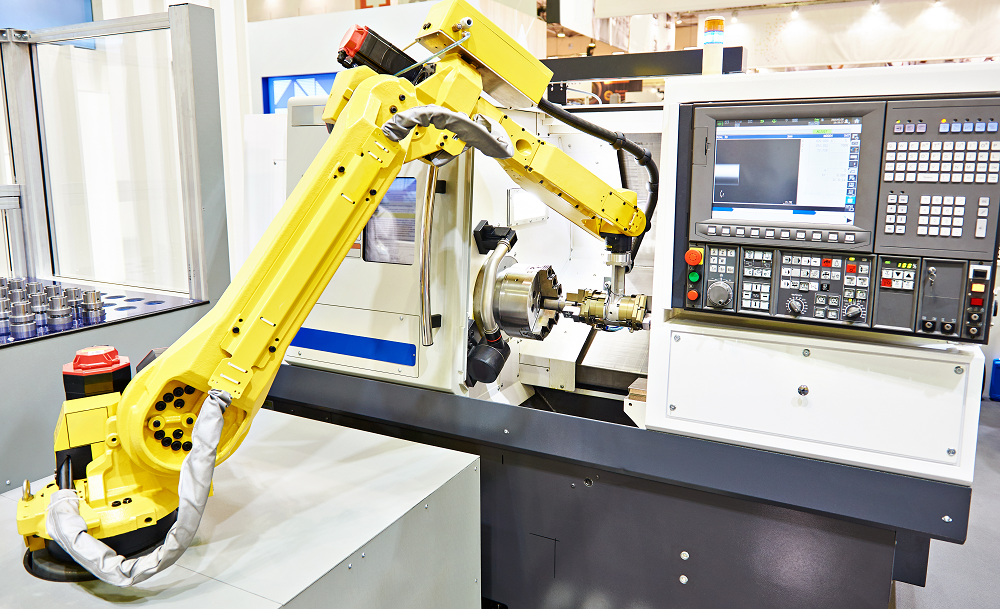As manufacturers continue recovering from the COVID-19 shutdown and supply chain disruptions, they’re looking for ways to bolster resilience. Automation has always been one of the primary avenues for improving efficiency and profit margins, but now it may be instrumental to survival. A recent survey shows 90% of companies have embraced the digital transformation to mitigate the risks that have surfaced over the past few years.
Many look to “lights-out” manufacturing as an operational end goal. In this paradigm, a minimal workforce maintains the machinery needed for unmanned production, as well as the technology involved in managing it. Workers could essentially turn the lights out and leave for the evening while automated machinery continues production.
Lights-out manufacturing offers many benefits, including incredible cost savings from reduced labor utilization, dramatically higher output, and more flexible schedules. However, these capabilities are still a strategic goal for many companies just beginning their pivot to automation. Manufacturers have many equipment and material considerations to take into account before making lights-out production a reality, including their selection and management of cutting fluid.
What Manufacturers Need for Lights-Out Machining
Achieving lights-out manufacturing requires significant investment in machinery and technology. Management will also need to overhaul many processes, including cutting fluid management, and train employees to work with robotics and automation software. Here’s what manufacturers will need to achieve lights-out automation:
- Acquire machinery and equipment capable of automation. For true lights-out capabilities, all machinery, cutting tools, and peripherals must be capable of operating independently to follow pre-programmed workflows.
- Implement automation software. All of this equipment will have to work together cohesively, integrated by end-to-end automation platforms.
- Employ well-trained staff and automation engineers. The workforce must be adept at equipment maintenance and troubleshooting, as well as programming the software that will ultimately execute workflows.
- Develop efficient coolant delivery and maintenance systems. Cutting fluid distribution will also need to be managed by machines integrated with the automation software.
Cutting Fluid Considerations for Lights-Out Machining
For the most reliable lights-out operation, shop managers may need to rethink their approach to coolant, both in terms of how it’s managed and which one is selected. Here’s what to keep in mind:
Follow Strict Coolant Management Protocols
To avoid issues in machines and coolant through systems, the fluid needs to be kept exceptionally clean. Not all operations will be equipped with automated filtering or recycling systems. However, even these high-tech systems will need efficient maintenance. Create coolant management protocols that remove chips, tramp oil, and other contaminants on a regular basis. This solves problems before they occur and also optimizes coolant performance.
Choose Cutting Fluids with Long Sump Life
The latest and most advanced cutting fluids, especially those in the TRIM® family, can maintain a long sump life even with minimal maintenance. That’s because they’re formulated to reject tramp oil and be resistant to bacteria, while being environmentally and machine friendly. These next generation, low-foam fluids are also incredibly important to reducing carryoff, as well as preventing sumps from overflowing and spilling on the floor during continuous unmanned machining.
Invest In Advanced Fluids
Operations using the most advanced, cutting-edge machinery should also use the most advanced, cutting-edge coolant. The latest, highest quality formulas stand apart with their extremely long sump life, uncompromised lubricity and cooling ability, and incredible versatility. In fact, advanced fluids like TRIM® MicroSol® 692XT, bio-based TRIM® HyperSol™ 888NXT, and TRIM® C390 are even compatible with the advanced composite materials used in additive manufacturing.
In unmanned, lights-out manufacturing environments, the most important feature to look for in any equipment, material, and cutting fluid is that it’s designed to prevent problems from occurring. The TRIM® catalog is the perfect tool for manufacturers trying to streamline operations and move toward automation. For more information or a trial of our products, call +1 800-537-3365 or email us at [email protected].

